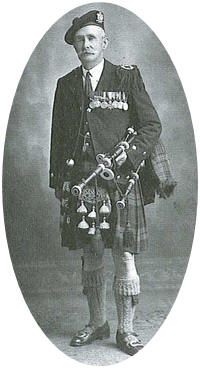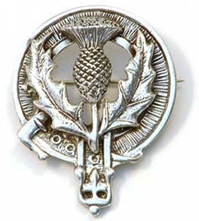|
Flanders Fields
is the generic name of the World War I battlefields in the
medieval County
of
Flanders. At the time of
World War I, the county no longer existed but corresponded
geographically to the Belgian Flemish Region and the French
Nord-Pas-de-Calais region. The name is particularly associated
with the battles of Ypres, Passchendaele, and the
Somme. For much of the war, the front line ran
continuously from south of Zeebrugge in Belgium, to the Swiss border with
France.
"In
Flanders
Fields"
is one of the most famous poems about World War I, and has been
called "The most popular poem" produced by the war. It is
written in the form of a French rondeau. It was written by
Canadian physician and Lieutenant Colonel John McCrae on May 3,
1915, after he witnessed the gruesome death of his friend,
Lieutenant Alexis Helmer, the day before. The poem was first
published on December 7, that year in Punch magazine.
The
poppies referred to in the poem grew in profusion in Flanders (Belgium) where
war casualties had been buried and thus became a symbol of
Remembrance Day. The poem is part of Remembrance Day solemnities
in Allied countries which contributed troops to WWI,
particularly in countries of the British Empire which did so:
In Flanders fields the poppies blow
Between the crosses, row on row,
That mark our place; and in the sky
The larks, still bravely singing, fly
Scarce heard amid the guns below.
We
are the Dead. Short days ago
We lived, felt dawn, saw sunset glow,
Loved, and were loved, and now we lie
In Flanders fields.
Take
up our quarrel with the foe:
To you from failing hands we throw
The torch; be yours to hold it high.
If ye break faith with us who die
We shall not sleep, though poppies grow
In Flanders fields.

Known
to pipers as “John MacLellan, Dunoon” but to friends and family
as “Jock,” John MacLellan was a quiet and shy man who composed
some of the most enduring melodies in pipe music.
Among
his greatest contributions are the retreat marches
Lochanside, The Highland Brigade at Magersfontein, Heroes of
Vittoria, The Bloody Fields of Flanders and The Dream
Valley of Glendaruel, the competition marches The
Taking of Beaumont Hamel, The Cowal Gathering, South Hall
and Glen Caladh Castle, the slow air Mary Darroch,
and the 2/4 slow march The Road to the Isles. The
latter tune, composed around 1891, began life as “The Bens of
Jura,” soon became “The 71st’s Farewell to Dover,” then “The
Highland Brigade’s March to Heilbron” and later “The Burning
Sands of Egypt.” What probably began as a rousing 2/4 march was
gradually transformed into today’s popular song and slow march.
He was
born in Dunoon on August 8, 1875 of an Islay father and Jura
mother, Neil MacLellan and Mary Darroch MacLellan. He had two
brothers and three sisters.
Little is
known about his early piping life, or even who taught him. This
was perhaps partly because he was known to be modest to a fault
and would very rarely talk about himself. Very few photos of him
have come to light.
He enlisted
in 1892 at age 17 with the Highland Light Infantry and went with
the 1st Battalion to Malta in 1897. It was at this point that he
began naming his compositions for places where he served or
people he served with. He saw action in the Boer War in South
Africa, where he was awarded the Distinguished Conduct Medal for
gallantry in the field.
He
left military life soon thereafter and in 1903 joined the Govan
Police Pipe Band in Glasgow before returning to Dunoon around
1905. Some of his compositions can be found in the old Peter
Henderson publications as written by “J. MacLellan, Govan Police."
However, most of his tunes were first
published in the Cowal Collection books. Because he
never published his own collection his status as one of the
greatest and most prolific and pipe music composers is perhaps
not as clear as it is with G. S. McLennan and Donald MacLeod.
During the Great War he was a piper in the 8th Argyllshire
Battalion Argyll and Sutherland Highlanders – Willie Lawrie’s
regiment – and served with the 51st Highland Division on the
Western front.
He
became pipe-major of the 8th Argylls in 1919 held that position
until he retired in 1930.
During the 1930s, he compiled and published a book of tunes
composed by members of his regiment –The 8th Battalion of
the Argyll and Sutherland Highlanders Collection. He
contributed 40 of the 65 tunes in the collection, and this
remains the largest single collection of his work published
while he was alive. In later life he was active in piping
around Dunoon, teaching the Dunoon Grammar School Cadet Pipe
Band and helping the local Boys’ Brigade band.
Besides being a piper, he played the
fiddle and was said to be an excellent whistle player. He was a
middling painter and poet, and one of the few composers who
often wrote lyrics to his tunes. In some cases he wrote the
lyrics first. He was known to write light verse at the front,
100 yards from the German lines, and his poetry was often
published in newspapers in the west of Scotland.
He
died at 73 on July 31, 1949 at Dunoon Cottage Hospital after a
short illness and was buried with full military honors in Dunoon
Cemetery. A plaque was erected in his honor in the Castle
Gardens in Dunoon near the pier in 1972.
|



